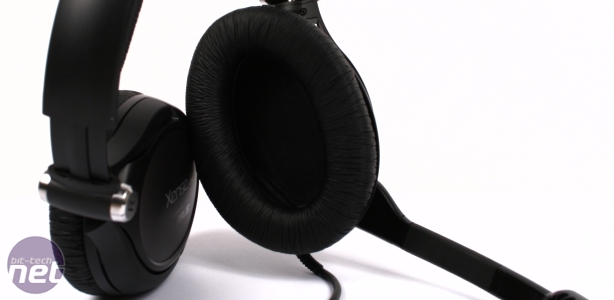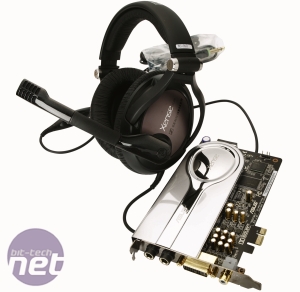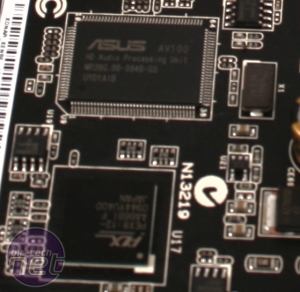
Balanced Input and Output
Like other Xonar cards, the advanced headphone options in the Xense's driver allow you to change the card's behaviour to suit different headphone impedances. It does this by increasing the level of gain (amplification) on the headphone output. As well as settings for Normal (less than 64 ohms), High (64 - 300 ohms) and Extra High gain (300 - 600 ohm) headphones, there's an option designed to match the PC 350 headphones' 150 ohms.Unfortunately, our usual reference sets of 32 ohm headphones sounded underpowered at settings under 64 ohms, which means that you're pretty much stuck with the PC 350 headset with this card, or some other high-impedance (expensive) headset. High-impedance headsets other than the PC 350 sound great through the Xense One; audio quality from the headphone output to our studio monitors was outstanding, with crystal-clear trebles that reproduced all the subtle harmonics of our most challenging test tracks. Mid-tones were lush and bass notes were sold but not overwhelming. The Xense One is excellent for high-quality audio enjoyment, as long as you have the equipment.
We then moved to testing the PC 350 with the Xense One. It's well designed for gaming, with a 3m cable and plenty of padding. The cans comfortably surrounded our ears without putting pressure on them, and they blocked out a lot of background noise, including most of the sound of our fan-heavy gaming rig. The PC 350 displayed a solid, detailed mid-range and an emphatic bass, while the wide soundstage created a real sense of place that lent itself to positional and environmental audio.
The headphones output more volume than our ears could take, and with perfect clarity, and while the microphone picked up background noise too easily, it was equally loud and clear. While the PC 350 is one of the few gaming headsets that can compare to dedicated music headphones, we found the sound a little muddy and lacking in treble when compared to our similarly priced reference in-ear headphones from Shure, or even Creative's cheaper Aurvana Live! headphones.
Conclusion
We're great fans of Asus' sound cards, and the Xense One is no exception - the specification and audio quality are good enough to satisfy the keenest hi-fi enthusiast. While supposedly matched to the card, we weren't particularly impressed by the Sennheiser PC 350 headset for out-and-out sound quality. We'd rather opt for a Xonar Essence STX card and headphones of our own choosing. In the heat of the battle, there was little to distinguish this setup from the already excellent positional audio provided by cheaper cards in the Xonar range.While many people like the PC 350 headset, the Xense One is arguably too much sound card just for gaming. The headset (to our ears) isn't of a high enough quality to be seriously considered for indulgent audio listening - the muddiness and lack of treble had us looking elsewhere.
If audio quality isn't the most important factor from your PC, a combination of a Xonar DX and Creative SoundBlaster Arena will satisfy you for £70 less than this bundle. Audiophiles will likely be better off buying the Xonar Xense One or Essence STX and buying a favourite headset separately.
- Sound Quality
- x
- x
- x
- x
- x
- x
- x
- x
- -
- -
- 8/10
- Features
- x
- x
- x
- x
- x
- x
- x
- x
- -
- -
- 8/10
- Value
- x
- x
- x
- x
- x
- x
- x
- -
- -
- -
- 7/10
- Overall
- x
- x
- x
- x
- x
- x
- x
- -
- -
- -
- 7/10
Note: this review was first published on 31 May 2010 as Asus kindly gave us early access to the hardware. Three months later, the kit is on sale at Overclockers for £200 rather than the £275 we were originally quoted, so we've revised our conclusion and scores.

MSI MPG Velox 100R Chassis Review
October 14 2021 | 15:04











Want to comment? Please log in.